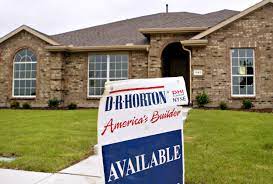The supply chain disruptions and labor shortages that have plagued homebuilders over the past several months is intensifying. Earlier this morning, leading U.S. homebuilder D.R. Horton (NYSE:DHI) cut its Q4 revenue and home delivery guidance, stating that it continues to grapple with a tight labor market, logistical delays, and a scarcity of certain supplies. Specifically, the company is now forecasting revenue of $7.7-$7.9 billion versus its prior outlook of $7.9-$8.4 billion, with deliveries of 21,300-21,700 compared to the previous range of 23,000-24,500.
Following PulteGroup’s (PHM) reduction in quarterly delivery guidance on September 8, the news from DHI doesn’t come as a complete surprise. Similarly, PHM cited shortages of a variety of building products as the main culprit for its lowered outlook.
Supply chain and labor market dislocations aren’t the only headwinds that DHI, PHM, and other homebuilders are facing.
Although lumber costs have tumbled by over 50% from this spring’s peak, other material costs remain elevated. For instance, steel prices have soared due to tight domestic supplies and tariffs on imports. Overall, residential construction material costs have climbed by 13% yr/yr through the first eight months of 2021, according to The National Association of Home Builders.
To contend with these headwinds, DHI and some of its peers are choosing to sacrifice volume for stronger margins. In other words, rising costs are being passed onto home buyers, putting further pressure on home affordability. In today’s press release, DHI also lifted its Q3 home sales gross margin to 26.5-26.8% from 26.0-26.3%. Naturally, the risk here is that prospective home buyers will balk at the higher prices.
On that note, there are still a number of bullish trends working in DHI’s favor, including low interest rates, remote working, and family formation among millennials. These underlying catalysts underpin the company’s positive longer-term outlook, which still calls for double-digit growth for homes closed in FY22.
The main takeaway, though, is that some cracks are emerging in the housing market. Although demand is currently not an issue, it could become one if building costs continue to rise. This would force DHI and other home builders to choose between adding supply to the market at lower prices/margins to generate sales; or, to continue raising prices, creating significant home affordability issues in the process.





